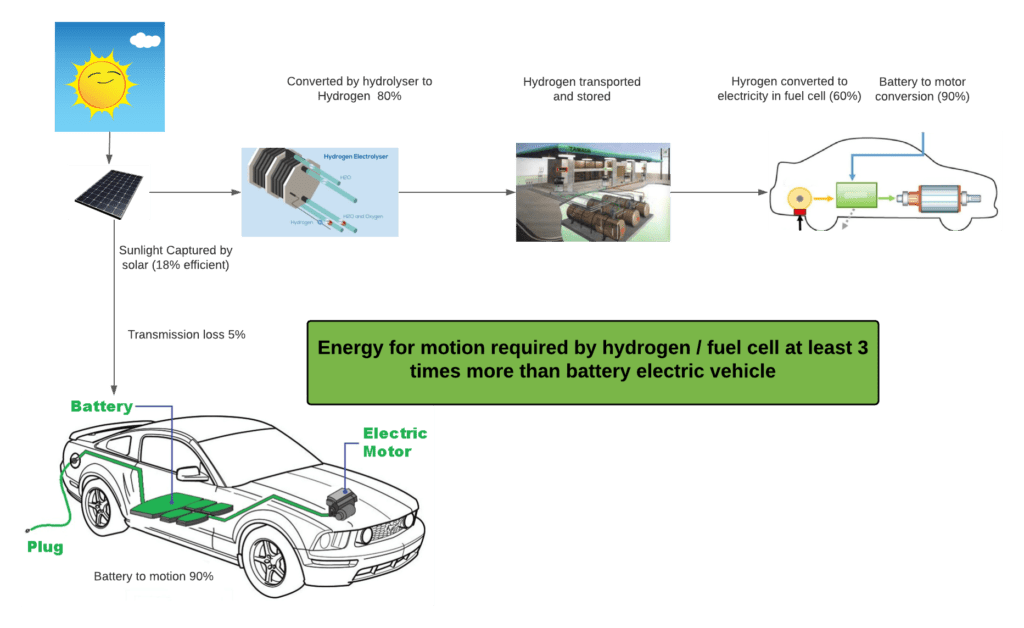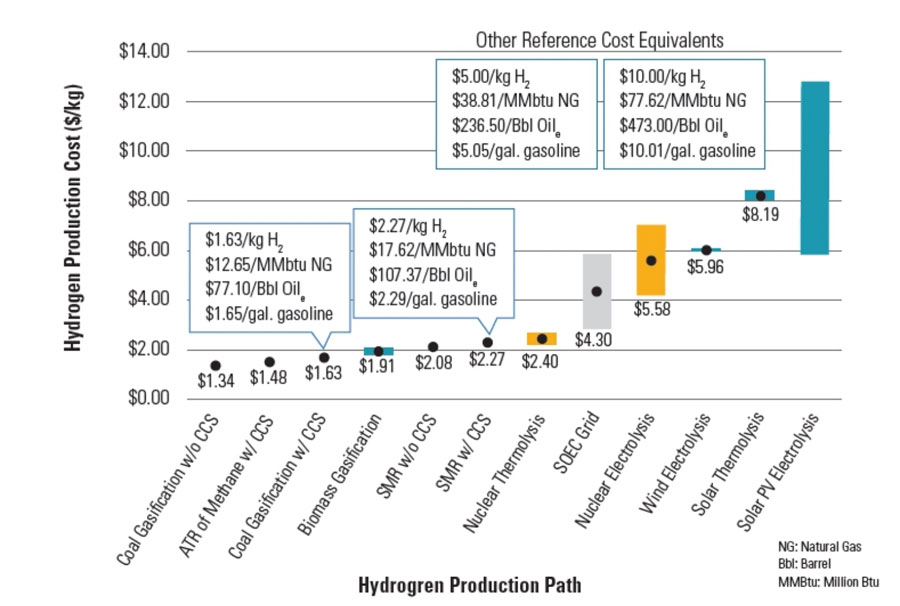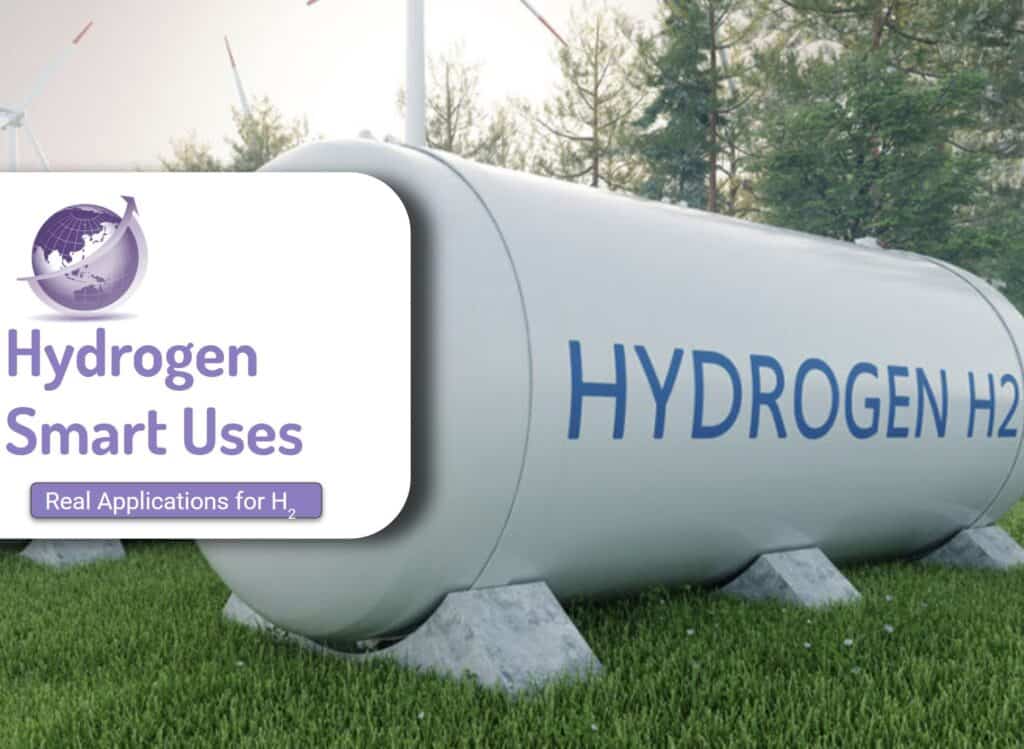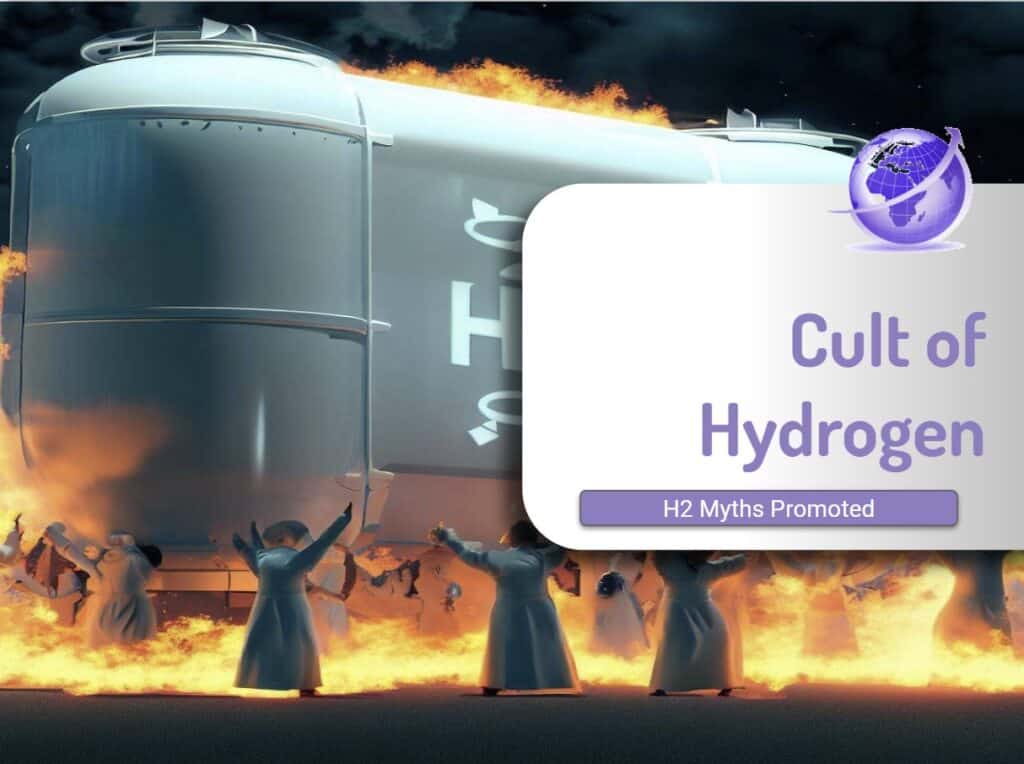Hydrogen is in the news these days – all the great things it will do but I would say these are hydrogen myths that are spread by reporters with poor understanding of science and technology. Hydrogen has been in the news for the past 50 years since the great oil shock, and has not appeared to have made huge progress, except for political Noise. It is going to power the transport the transportation system, run our cars, our heavy transport and save the renewable energy space. Wrong!
Dispell the Hydrogen Myth
So I challenge you to dispel the hydrogen myth. Hydrogen for small vehicle transport has never made sense. Tony Seba (of RethinkX think-tank) as far back as 8 years ago was saying it was fanciful. But more focus and a bit of awakening after listening to some podcasts, reading the news, digging up some science articles to validate that what these podcasts and videos were saying was true. I say there are 5 hydrogen myths to know. Discern the reality from the hype.
The real killer for hydrogen fuel cell (H2FC) cars is their wind-to-wheel (or solar-to-wheel) inefficiency. Driving a small family car 100km, whether H2FC or BEV, uses 15kWh of motive energy at the wheels. For the BEV, taking into account losses on the grid and in the battery cycle and drive train, that translates into a need to generate 25kWh at the plant where the electricity is generated. The equivalent for the H2FC car, given losses in electrolysis, compression, transport, storage and reconversion of hydrogen, is at least 50kWh. Put simply, hydrogen cars are half as efficient as BEVs – and there is no reason in physics to think that will change. (See Liebreich: Separating Hype from Hydrogen).
“Fuel Cells”=”Fool Sells” or hydrogen fuel cells are “mind-bogglingly stupid”
Elon Musk, June 20 2020
Uses Of Hydrogen
There are many potential uses of green hydrogen – firstly to replace all the fossil fuel-generated hydrogen (blue or grey). So it is important to determine end use.
- Transportation of cars and smaller vehicles (proponents Toyota etc)
- Transportation – large vehicles and ships (proponent JBL, buses, Future Fuels Innovation)
- Burning for electricity for long term storage (existing electricity generators)
- Replacement of fossil gas (methane, or “natural gas”) for heating
- Use in green steel production or other industrial process for high heat.
What Contributes to Hydrogen Myths
- The Energy Physics – Laws of Thermodynamics.
- Green Hydrogen Costs
- Sources of energy to Create Hydrogen
- Who are the Big Promoters
- What Use May Hydrogen Have
1. The Physics of Hydrogen Energy
Hydrogen is useful but it is just stored energy. While abundant (as the Hydrogen in water H2O) to get it to H2 it takes energy. Not much use by itself, so it either get burnt (for heat energy) or is used in a fuel cell (which creates energy and water) but in most applications that fuel cell generates electrical energy to store in a battery and then in an electric motor for motion energy.

For Battery: Renewable energy —–> transport —-> Battery —> motor —-> motion
Renewable Energy —-> Hydrolyser —-> Storage —-> transport —> Storage –> Fuel Cell —> Battery —–> motor —> Motion
It takes 3 times as much energy as renewable energy and batteries. I.e. 3/4 is wasted in the process. Yes – better than fossil fuel but it means an inefficient use of the sunlight to energy process.

And today there is not a plant in the world making large quantities of green hydrogen. The capital cost of the hydrolyser means it will need to run at high utilisation, and that means it will required 24 x 7 renewable energy to be fully green/
2. Cost of Green Hydrogen
It turns out the current cost of gray hydrogen is from $8 to $16 per kg based on fossil fuel production of grey hydrogen.
The cost needed to be competitive with batteries $2 per kg or some even say $1 per kg.
Basically it needs a cost down of 10 times otherwise it is a pipedream. It is possible, as PV panels have come down 20 times in the past 20 years. Possible. But not probable.
Eg, Ten years maybe before it gets there economically, and some say it might halve by 2050! eg. This article from Nasdaq.com
Why? Two costs.
- Cost of energy (needs essentially free energy given it needs 4 times that of storage in a battery)
- Capital Cost of the electrolyser / hydrolyser. Very high cost and probably needs 90% utilisation, and renewable energy is not there yet. So it would have to use electricity from fossil fuels.
3. Sources of Energy to Create Hydrogen
Some say there are 3 types of hydrogen but terms are a bit fluid.
- Gray – from natural gas reforming or Coal gasification. (called grey)
- Blue – capturing from methane (gas) and then managing to carbon sequestration (another “pilot” technology that is very expensive and not in production, despite hype)
- Green – using renewable energy

Listen to the podcast with the head of BHP green energy team, Rio, the CEFC, and Enel Green Power. It turns out green hydrogen is 10 years away from actual reality. The conclusion from these and others is to forget hydrogen for anything moving. Hydrogen may have a use in iron production or in burning but ) Remember it has to drop by 10 times at least.
One of the reasons is that green hydrogen needs renewable energy, and the “hydrolyser” which turns water into hydrogen has a huge capital cost. So it needs to run at 90% or higher. And that does not include other energy costs, the huge amount of water needed (so that needs seawater and desalination, storage costs and inefficiencies in conversion back from hydrogen to energy.
4. Who Are the Big Promoters
The same fossil fuel companies are the biggest protagonists? Why? The have the business model from gas. They own the manufacturing, the distribution and sales of fossil fuels. Substituting H is duplicating the model.
Most plants are still pilot plants. A Danish power firm’s “SeaH2Land” development will link gigawatt (GW)-scale electrolysis to the large industrial demand in the Dutch-Flemish North Sea Port cluster through an envisaged regional cross-border pipeline. (see here) The green electricity required to produce the renewable hydrogen is expected to come from the build-out of additional large-scale offshore wind. Planned plants in North West Australia has run into regulatory headwinds and disapproved by the Australian Government.
5. Is there a Use for Hydrogen
It may be useful to have a product for burning. It is high temperature and steel companies are piloting steel mills to use hydrogen rather than coal. There are some pilot plants (eg Norway see here) or in Europe. Most of them have to develop the hydrogen as well as the change to the mills themselves, but it appears it works well.

But if you have wheels, then you can carry the fuel with you. It does not matter too much how heavy the battery is. The lighter, the further the range. The improvements in charging speed from hours to a few minutes means the primary argument for hydrogen has gone.
Green Hydrogen Advances
The media is full with changes and improvements, and so this article will date. Check out the latest article
Green Hydrogen Costs Need to Fall Drastically

Hydrogen Augmentation of Conventional Fuel
There is interest and investment in using H2 to augment conventional fuel vehicles. H2I Technology from Australia says the hydrogen enhancement kits, available by end of 2022, will reduce emissions by 30% and improve fuel consumption by 20%, while potentially extending the life of existing internal combustion engines. H2I are focused on augmenting the capabilities of generators, mining equipment, heavy machinery, buses, trucks, ships, and trains through the hydrogen injection system. There have been a number over the years. Will they find a niche? Probably.
Further Reading or Listening
- Renew Economy Podcast on Hydrogen in Mines Along with the head of BHP Renewable division, Katheren Hall, Rio Tinto , the CEFC, and Enel Green Power. Lorenzo
- Future Tense from RN ABC.. A great podcast from ABC Future Tense
- An Interview https://www.youtube.com/watch?v=lLacN7wh7k8 Alex Voigt is a German who had a renewable businesses in Germany. This podcast from FullyCharged. They talk about dangers of hydrogen fuel. Watch from 24 minutes. Imagine, tyre pressure is 32 psi, and hydrogen tanks at 5000 psi. Travelling bomb.









